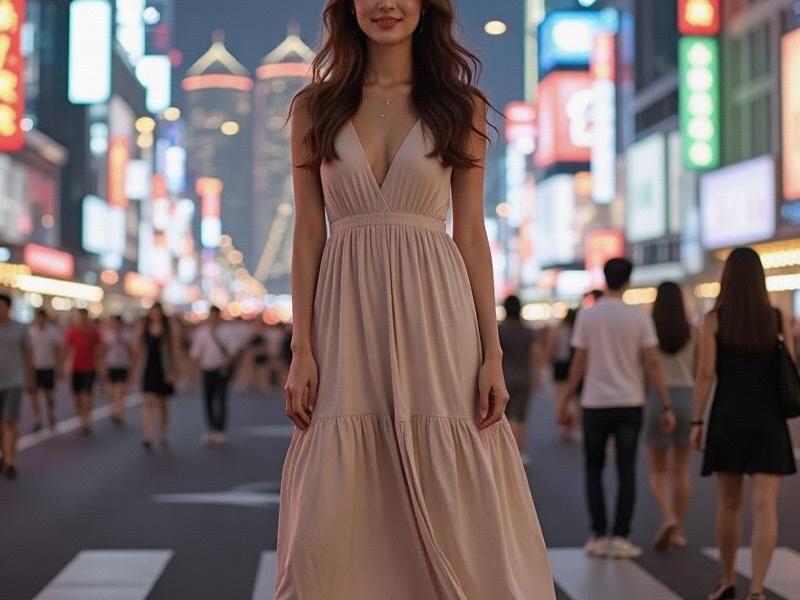This 2500-word feature explores how Shanghai women are leading China's cultural renaissance by blending traditional aesthetics with contemporary innovation, creating new paradigms of beauty, style, and professional success that resonate globally.

The Shanghai woman of 2025 stands at the crossroads of tradition and futurism. At 7:30 AM, you might find 28-year-old tech entrepreneur Zhang Liling practicing tai chi in Jing'an Park wearing a smart qipao that monitors her vitals, before heading to her AI startup office where she leads a team of 50 engineers. By evening, she's hosting a pop-up exhibition of digital art inspired by Song Dynasty landscapes. This seamless integration of heritage and innovation defines Shanghai's contemporary female identity.
Fashion has become their most visible form of cultural expression. Local designers report that Shanghai women are pioneering "Neo-Shanghai Style" - characterized by reinvented cheongsam silhouettes with tech-integrated fabrics, architectural headpieces referencing traditional hair ornaments, and makeup that blends 1930s Shanghai glamour with augmented reality filters. "Our clients want fashion that tells a story," explains designer Vivian Wang, whose Xintiandi boutique creates customizable digital couture. "A dress might project moving images of the Bund's history while being cut from space-age materials."
爱上海论坛 The professional landscape tells an equally compelling story. Women now lead 42% of Shanghai's Fortune 500 China headquarters, up from 28% in 2020. In emerging fields like green finance and metaverse architecture, the ratios are even higher. What's remarkable is how these executives maintain cultural connections - it's common to see female tech CEOs wearing jade jewelry passed down through generations during IPO roadshows, or fintech leaders incorporating Daoist philosophy into management strategies.
Beauty standards have undergone a quiet revolution. While skincare remains paramount, Shanghai women have moved beyond rigid ideals to celebrate "smart beauty" - the use of AI diagnostics to crteeapersonalized regimens, and acceptance of distinctive features. The popularity of "face mapping" consultations at Kerry Center's Beauty Tech Hub demonstrates this shift. "We're seeing rejection of homogenized beauty," notes dermatologist Dr. Emma Zhou. "Women want enhancements that honor their unique facial architecture and heritage."
上海龙凤419杨浦
Cultural preservation takes innovative forms. Book clubs specializing in feminist reinterpretations of classical literature have proliferated, while supper clubs serve molecular gastronomy versions of Shanghainese home cooking. Most strikingly, young professionals are reviving traditional crafts - a group of female architects recently gained fame for creating 3D-printed furniture using motifs from Ming Dynasty gardens.
上海喝茶服务vx The economic impact is profound. Shanghai's female-driven "cultural tech" sector - blending heritage elements with digital innovation - now generates ¥380 billion annually. Women control 65% of luxury purchases in the city, and female-founded businesses account for 47% of Shanghai's creative industries. International brands increasingly consult Shanghai trendsetters when developing China strategies.
As twilight descends on the Bund, the city's women transition effortlessly between roles - tech visionary, cultural custodian, fashion icon. They represent a new archetype: deeply rooted in Chinese tradition yet boldly innovative, creating a model of modern femininity that's distinctly Shanghainese yet universally resonant. In doing so, they're not just participating in China's cultural renaissance - they're leading it.